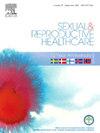Reconsidering “inclusive language:” Consequences for healthcare and equitableness of a growing linguistic movement to address gender identity with a path forward
IF 1.7
3区 医学
Q3 PUBLIC, ENVIRONMENTAL & OCCUPATIONAL HEALTH
引用次数: 0
Abstract
Increasingly, the language of female reproduction is changing, so terms directly referencing people’s sex are replaced with terms obscuring sex, a language form commonly called “inclusive language” but more accurately is “desexed language.” Desexed language is promoted as assisting individuals experiencing an inner sense of themselves (a gender identity) in conflict with their sex, a state described as being transgender or gender-diverse. It seemingly assumes no harm to the general population. However, the scant existing research suggests it may not be well accepted or understood. There are a variety of types of desexed language, including globalizing language (e.g. replacing “women” with “people”), biology-based language (e.g. “lactating individuals,” “menstruators”), neologisms (“chestfeeding”), appropriation of terms with other meanings (“sex assigned at birth”), and additive language (e.g. “women and birthing people”). Second- and third-person language (e.g. “if you are sexually active,” “those who are pregnant”) can be a type of desexed language depending on context. Desexed language is likely to have an adverse impact on people with low health literacy and language skills, risk alienation, and cause confusion, especially in non-Western countries and cultures. It may even cause harm to transgender and gender-diverse people who also need clear health communications as well as specialized healthcare. Widespread use of desexed language is contrary to the usual practice of implementing targeted tailored communications for those with specialized needs while using the most effective language for most people for general communications. Comprehensive research on the impact of desexed language is urgently needed.
重新考虑“包容性语言”:不断发展的语言运动对医疗保健和公平的影响,以解决性别认同问题
女性生殖语言的变化越来越大,直接指代人的性别的术语被模糊性别的术语所取代,这种语言形式通常被称为“包容性语言”,但更准确地说,是“去性别语言”。非性别语言的推广是为了帮助个人体验与性别冲突的内在自我意识(性别认同),这种状态被描述为跨性别或性别多样化。它似乎假定对普通大众没有伤害。然而,现有的少量研究表明,它可能没有被很好地接受或理解。非性别化语言有多种类型,包括全球化语言(例如用“人”代替“女人”)、基于生物学的语言(例如“哺乳个体”、“月经来潮者”)、新词(“喂奶”)、挪用具有其他含义的术语(“出生时指定的性别”)和附加语言(例如“妇女和分娩人”)。第二人称和第三人称语言(例如,“如果你性生活活跃”,“那些怀孕的人”)根据上下文可以是一种非性别语言。非性别化的语言可能对健康素养和语言技能较低的人产生不利影响,有被疏远的风险,并造成混乱,特别是在非西方国家和文化中。它甚至可能对跨性别者和性别多样化的人造成伤害,这些人也需要明确的健康沟通以及专门的医疗保健。广泛使用非性别化语言与通常的做法相反,即为有特殊需要的人实施有针对性的量身定制的沟通,而使用对大多数人最有效的语言进行一般沟通。迫切需要对非性别化语言的影响进行全面的研究。
本文章由计算机程序翻译,如有差异,请以英文原文为准。
求助全文
约1分钟内获得全文
求助全文
来源期刊

Sexual & Reproductive Healthcare
PUBLIC, ENVIRONMENTAL & OCCUPATIONAL HEALTH-
CiteScore
2.70
自引率
5.60%
发文量
73
审稿时长
45 days
 求助内容:
求助内容: 应助结果提醒方式:
应助结果提醒方式:


